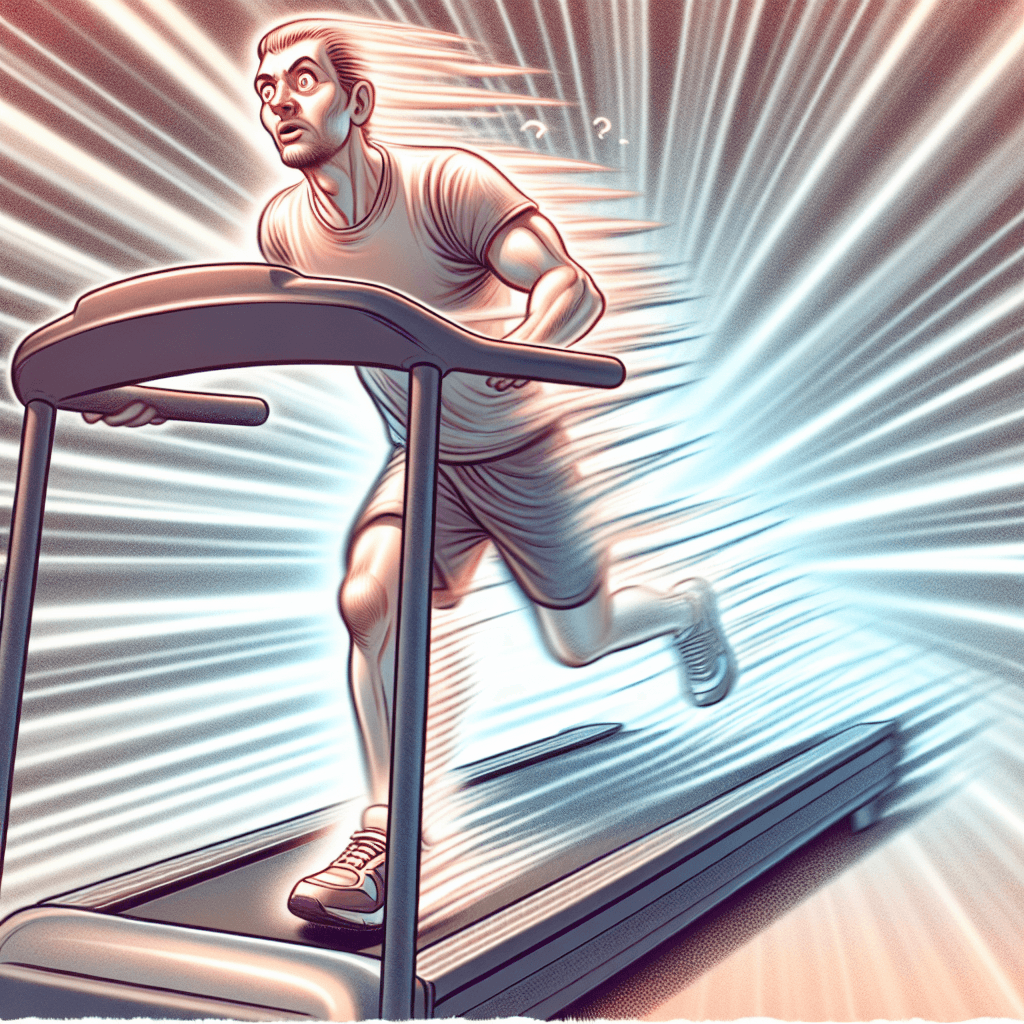Why do some street performers seem to float in mid-air
It’s not magic or superhuman strength keeping them suspended for hours; it's a brilliant feat of engineering hiding in plain sight.


Too Long; Didn't Read
TLDR: The performer is sitting on a hidden metal seat connected to a steel frame. The frame runs through their loose clothing and the staff they are holding, which is bolted to a heavy plate on the ground concealed by a rug.
The Secret Behind the Levitation: Why Do Some Street Performers Seem to Float in Mid-Air?
Have you ever walked down a bustling city street and stopped in your tracks, captivated by a performer seemingly floating in mid-air? Dressed as a stoic monk, a golden statue, or even a character like Yoda, they sit serenely, suspended several feet off the ground with only a hand resting on a staff for support. It’s a magical sight that defies our understanding of gravity and leaves crowds wondering, "How do they do that?" While it may look like a mystical feat of levitation, the secret lies not in magic, but in a brilliant combination of simple physics and clever engineering. This post will demystify this captivating illusion, revealing the hidden structure that makes the impossible appear real.
The Illusion: What We See
The power of the floating performer illusion lies in its masterful misdirection. Our eyes see a person hovering in a seated position, often cross-legged, with no visible means of support. The only connection to the ground is a staff or cane that the performer holds. This single point of contact seems entirely insufficient to support a full-grown adult, creating a powerful cognitive dissonance. We know it shouldn't be possible, yet there it is. The loose-fitting robes, elaborate body paint, and the performer's unwavering stillness all add to the mystique, drawing our attention away from the mechanics and toward the spectacle.
The Mechanics: How It Really Works
The secret to this incredible illusion is a carefully concealed support apparatus hidden from view by the performer's costume and a strategically placed rug. The entire structure acts like a cantilevered chair, providing a stable, unseen seat.
The Hidden Structure
The device is composed of three primary components working together:
- The Base Plate: A heavy, flat steel plate rests on the ground. This is the foundation of the entire rig. It’s heavy enough to act as a counterbalance to the performer’s weight, ensuring the structure doesn't tip over. To hide it, performers cover it with a carpet, blanket, or mat.
- The Vertical Support Pole: This is the most visible part of the trick, disguised as the "staff" or "cane." It's a sturdy steel pole that slots securely into the base plate. While it appears the performer is merely resting their hand on it, this pole is the main load-bearing column that transfers their weight down to the hidden base.
- The Seat: Connected to the top of the vertical pole is a small platform or seat, shaped to be as comfortable as possible for long durations. This part of the structure runs up through the performer’s sleeve (which is often a rigid casing) and attaches to a harness or seat hidden beneath their loose-fitting costume. The performer is actually sitting comfortably on this hidden platform, not holding themselves up with arm strength.
In essence, the entire contraption is a single, rigid steel frame. The performer simply sits on the hidden seat, and the staff and their arm sleeve act as a cleverly disguised support beam.
The Art of Deception and Endurance
While the engineering is clever, the illusion would fail without the art of performance. The success of the trick hinges on two human factors: misdirection and endurance.
The costume is the most critical element of misdirection. Flowing robes, long sleeves, and draping fabrics are essential for concealing the bulky harness and seat platform. The staff itself is the perfect decoy, making the audience focus on the one "obvious" but misleading point of support.
Beyond the setup, performing this illusion is a remarkable feat of physical and mental stamina. The artists must remain almost perfectly still for hours on end, often in uncomfortable weather conditions, from scorching sun to biting wind. They must endure muscle cramps, boredom, and the constant scrutiny of the public while maintaining a serene and meditative expression. It's a testament not only to their cleverness but also to their discipline as performers.
Conclusion
So, the next time you see a street performer seemingly floating in mid-air, you’ll be in on the secret. The "magic" is a masterful illusion built on a foundation of clever physics—a hidden frame consisting of a base, a pole, and a seat. However, knowing how it’s done doesn’t diminish the spectacle. Instead, it allows for a deeper appreciation of the performance. You can admire the ingenuity of the apparatus, the artistry of the misdirection, and, most importantly, the incredible physical endurance of the performer who transforms a simple engineering trick into a captivating piece of street art.
More Articles

Why does your eyelid sometimes start twitching uncontrollably for no apparent reason?
That tiny, maddening flutter in your eyelid isn't just a random glitch; it’s your body sending a surprisingly simple signal you won't want to ignore.

Why do blue flowers seem to glow brightly at dusk?
That otherworldly glow you see from blue flowers at dusk isn't magic—it's a fascinating trick of the light happening inside your own eyes.

Why do you feel like you're still moving after getting off a treadmill?
Your feet have stopped, but your brain is still running a marathon. Discover the fascinating neural illusion that makes the world feel like it's moving long after your workout is over.